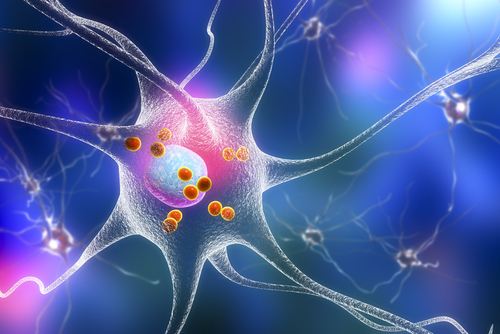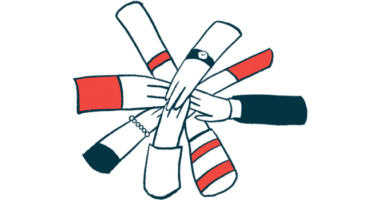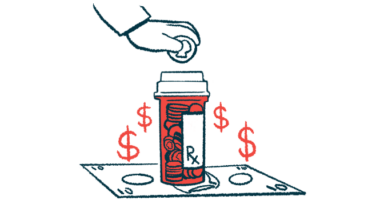Stimulating Muscle Cells May Help to Repair Motor Neurons

Muscle cell activity helps to promote motor nerve cell repair after injury, scientists found in using a device to model motor neuron and muscle cell interaction. They believe this finding could be relevant to diseases like amyotrophic lateral sclerosis (ALS) that imperil motor neuron survival.
The device was described in the study “Neuromuscular Activity Induces Paracrine Signaling and Triggers Axonal Regrowth after Injury in Microfluidic Lab-On-Chip Devices,” published in Cells.
Motor neurons send signals to muscle fibers, telling them when to contract. The space between a motor neuron (nerve cell) and a muscle cell, where these signals are sent, is called the neuromuscular junction (NMJ).
Understanding the activity of the back-and-forth signaling that occurs in this junction is important for understanding diseases like ALS, which are characterized by the degeneration and death of motor neurons. However, it’s very difficult to observe these processes in living animals.
Researchers described a new device to model the neuromuscular junction. This device uses microfluidics technology to grow cells on a small plastic device, a so-called ‘lab on a chip.’
Conceptually, the device is divided into two compartments: motor neurons are put in one, and muscle cells in the other. The motor neurons can ‘reach’ through small channels in the device to innervate (stimulate) the muscle cells, forming a modeled neuromuscular junction.
The researchers also used optogenetics to engineer cells (both motor neurons and muscle cells) that would activate in response to certain wavelengths of light. This allowed them to precisely control either type of cell activity, based on the requirements of a given experiment.
“The platform we designed allows us to put two types of different cells — neuronal and muscle — in the same device and modulate their activity through light stimuli,” José Antonio del Río, PhD, a study co-author and professor at Universitat de Barcelona (UB), said in a press release.
After numerous tests to confirm that their device worked as intended and formed functional junctions, the researchers used their device to examine how cell activity affected neural regrowth after injury. Essentially, they cut the motor neurons, then used light to activated either the motor neurons or the muscle cells (or neither, for a control cell group).
Activation of the motor neurons themselves resulted in about two-fold more motor neurons growing back, on average, than motor neurons without activation. However, this difference did not reach statistical significance, so it’s possible that this difference was due to random chance. More work will be needed to clarify this finding.
Upon stimulation of muscle cells, however, muscle neuron regrowth was significantly increased (233 vs. 106.6 pixel-axon values, as measured with a microscope). This suggested that, upon light-induced activation, the muscle cells were secreting something to promote neuronal regrowth. This type of interaction, where one cell type secretes a factor that affects another cell, is broadly termed paracrine signaling.
The researchers examined the expression of several molecular factors known to be involved in motor neuron growth. They found that, compared to muscle cells that weren’t activated, those that were produced significantly more leukemia inhibitory factor (LIF) and glial cell line-derived neurotrophic factor (GDNF), two molecular factors involved in motor neuron growth.
Further experiments confirmed that treatment with these factors promoted motor nerve cell regrowth following injury, lending credence to this as a mechanism for promoting motor neuron repair.
“[T]his study suggests the previously undescribed role of muscular activity through a paracrine mechanism to promote axonal regrowth of MNs [motor neurons] after injury,” the researchers wrote.
They suggest that similar approaches could be used to better understand other types of neuronal injury, such as the cell death that characterizes ALS.
“The discovery opens the window so that in the future, researchers can improve the effects of the current rehabilitation treatments,” said Arnau Hervera, PhD, a study co-author and postdoctoral researcher at UB.






